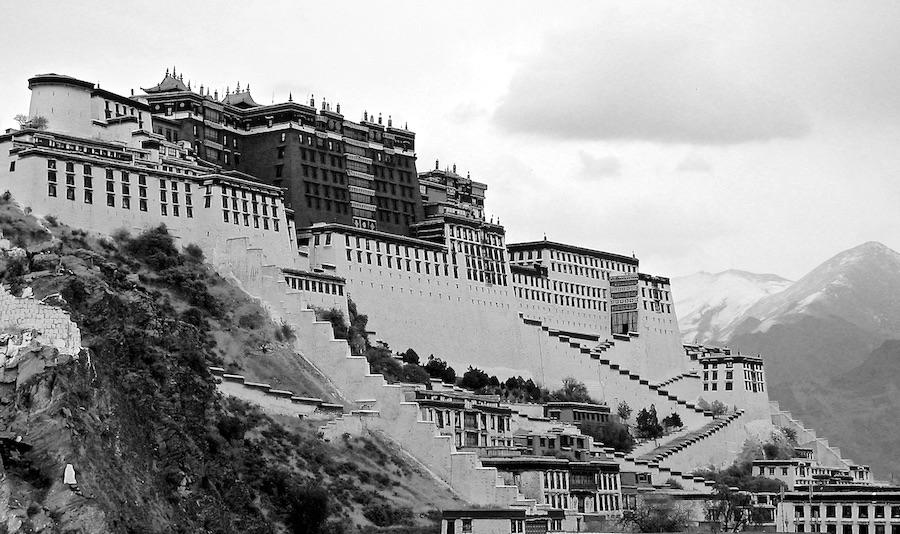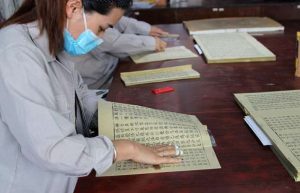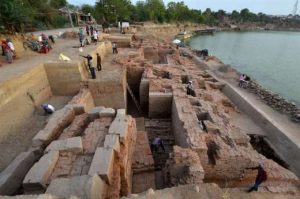
Government authorities in Lhasa have closed the iconic Potala Palace after reporting the first outbreak of COVID-19 in Tibet since 2020.* The Potala’s official social media sites have announced that the palace will be closed until further notice.
“In order to effectively prevent and control the epidemic and ensure the health and safety of the general public, the Potala Palace will be closed from 9 August,” a notice posted on the palace’s official WeChat account stated. (Inquirer.net) Other major tourist sites in Lhasa were also closed from Tuesday morning.
Named after Mount Potalaka, the mythical abode of the bodhisattva Avalokiteshvara, the Potala Palace sits atop Red Mountain in the center of the Lhasa Valley at an altitude of some 3,700 meters. The imposing landmark was originally built during the seventh century and subsequently underwent several major reconstructions. Considered a masterpiece of Tibetan architecture, the monastic complex is a symbol of Tibetan Buddhism because of its central historical role in the administration of Tibet. It remains a major pilgrimage destination for Tibetan Buddhists. The existing structure, which was listed as a UNESCO World Heritage Site in 1994, was completed in 1694 following a 45-year construction effort initiated by the fifth Dalai Lama. It was later expanded to its present size in the early 20th century by the 13th Dalai Lama.
The nearby seventh-century Jokhang Monastery, considered the most sacred Buddhist temple in Tibet, was added to the UNESCO World Heritage Site in 2000, and the 18th century Norbulingka, the former summer residence of the Dalai Lamas, was added in 2001.

Government officials for the Tibet Autonomous Region attributed the outbreak of the Omicron BA.2.76 variant to family gatherings. The officials added that some of those infected were members of a family who had traveled some 275 kilometers to Lhasa from the southwestern city of Xigaze (formerly Shigatse) to attend a funeral. According to media reports, government officials in Xigaze announced a three-day lockdown on Monday, with people banned from entering and leaving the city. They also instructed entertainment venues to suspend operations.
This is the first COVID-19 outbreak to be recorded in the region since January 2020.* Media reports indicate that the government has also implemented a mass-testing program and five-day lockdowns in parts of the Tibetan capital Lhasa. On Monday, the city authorities reported that 18 people had tested positive for COVID-19.
China has been tackling widespread outbreaks of the highly contagious Omicron variants by maintaining a strict zero-COVID policy that including mass testing and quarantines. Hong Kong’s South China Morning Post newspaper cited the party secretary for the Tibet Autonomous Region, Wang Junzheng, as saying the outbreak posed an “enormous challenge” to efforts to contain COVID-19. Wang added that the Chinese government was committed to eliminating the outbreak and minimizing the economic impact. The economy of Tibet is heavily dependent on tourism, and the Potala Palace is one of the most famous and popular landmarks.

Originally the official winter residence of the Dalai Lama, the Potala Palace is made up of more than 1,000 rooms and halls spread over 13 floors of the Red and White Palaces and numerous chapels and ancillary buildings. The complex has since been converted into a public museum. The Potala houses 698 murals, nearly 10,000 thangkas, some 10,000 shrines, and more than 200,000 statues and other precious and sacred objects, as well as an extensive library of sutras and historical documents.
The imposing walls, gates, and turrets, constructed from rammed earth and stone, were built to withstand earthquakes as the Himalayan region is prone to seismic disturbances. The White Palace houses the main ceremonial hall containing the throne of the Dalai Lama lineage, and includes the Dalai Lama’s private residence and audience hall at the uppermost level. The Red Palace, which contains gilded burial stupas of past Dalai Lamas, is devoted to Buddhist study and prayer. It is made up of halls, chapels, libraries, and galleries. Situated in the west of the complex is the sacred Namgyel Dratshang, the private monastery of the Dalai Lama.
At the time of writing, total confirmed coronavirus infections in mainland China had reached 2.3 million, according to official data from the Chinese health authorities, with an official death toll of 14,779 people since the beginning of the pandemic. For the past week, China has reported 35,042 new cases and 38 deaths.**

* Buddhist Monasteries in Tibet Closed; Coronavirus Infections Confirmed in Tibetan Regions of China (BDG)
** Johns Hopkins University & Medicine Coronavirus Resource Center
See more
China closes Potala Palace after COVID-19 reported in Tibet (Associated Press)
Coronavirus: Tibet’s Potala Palace shut as first Covid-19 cases since 2020 put Lhasa on high alert (South China Morning Post)
Tibet’s famed Potala Palace shut after COVID outbreak (Nikkei Asia)
China closes Tibet’s Potala Palace after COVID-19 outbreak (Inquirer.net)
China closes Potala Palace as Tibet sees first-ever COVID-19 outbreak (ANI)
Related news reports from BDG
Buddhist Monasteries in Tibet Closed; Coronavirus Infections Confirmed in Tibetan Regions of China
Renovation of Tibet’s Iconic Potala Palace Completed
Fire Breaks Out in Compound of Tibet’s 1,300-year-old Jokhang Temple; Extent of Damage Uncertain
Related features from BDG
Pilgrimage
A Mission of Preservation: A Conversation with Prof. Luo Wenhua of the Palace Museum












